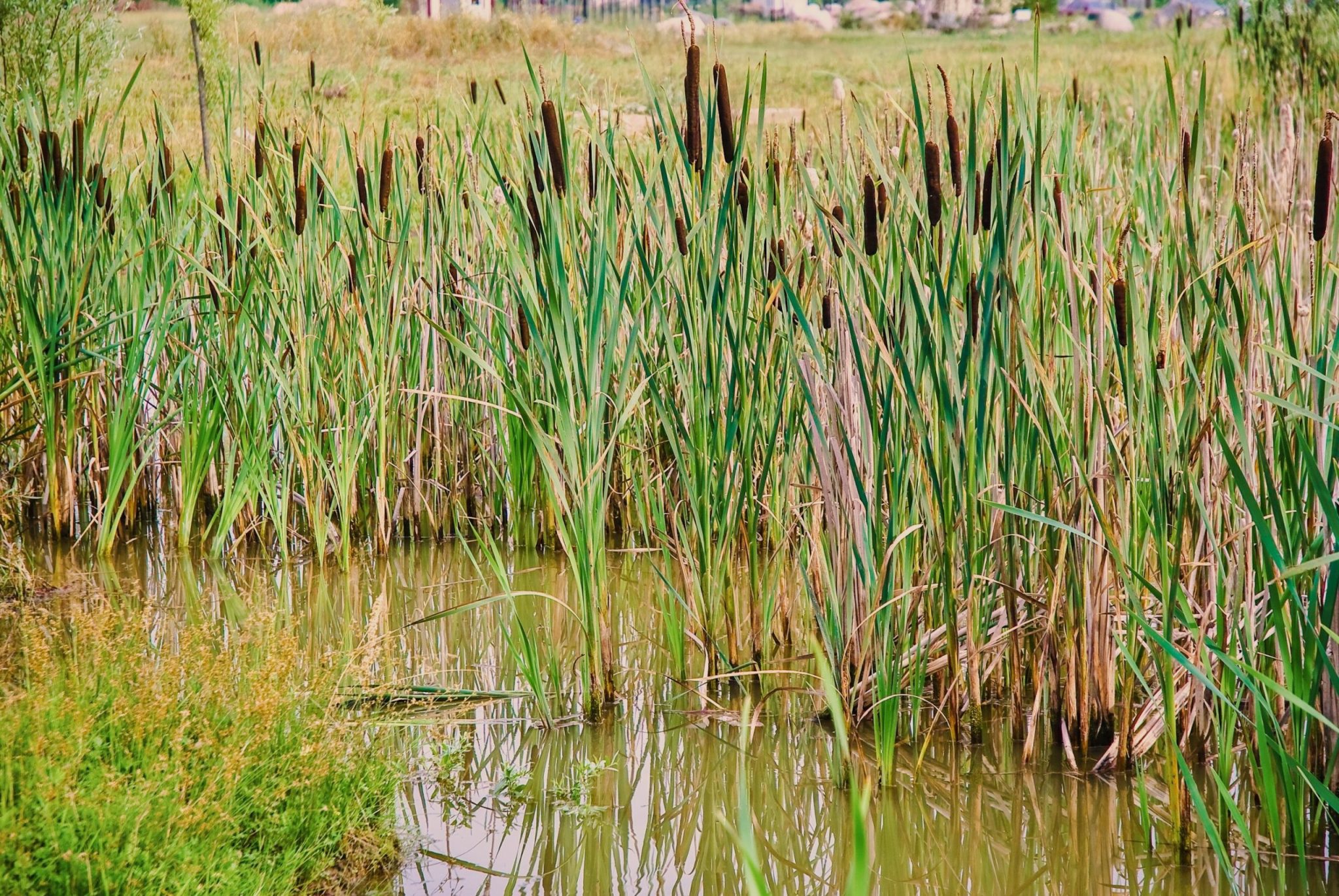Scientific name: Typha
Physical Characteristics
Aquatic, perennial herb, 5 to 6 feet tall from large, creeping rhizomes.
Leaves:
- Arranged & straight
- Immobile
- Linear
- Fleshy
Flowers:
- In a long, dense cylindrical spike
- Spike at end of stem
Fruit:
- Long-stalked small nut
Seeds:
- In the air
Stem:
- Simple
- Jointless
Where does Cattail grow?
Cattail normally grows in freshwater, forming dense colonies where salinities are very low, if any at all, but can be found in marshes where salinities reach 3.5 ppt.
Pros and Cons of Cattail
The rhizomes and lower leaf portions of cattails are consumed by nutria, muskrats, and geese. Submerged portions of all aquatic plants provide habitats for many micro and macro invertebrates. These invertebrates in turn are used as food by fish and other wildlife species (e.g. ducks). After aquatic plants die, their decomposition by bacteria and fungi provides food (called “detritus”) for many aquatic invertebrates.
USDA, NRCS. 2018. The PLANTS Database (http://plants.usda.gov, 28 March 2018). National Plant Data Team, Greensboro, NC 27401-4901 USA.
Information and photos courtesy of AquaPlant A Diagnostics Tool for Pond Plants and Algae.

